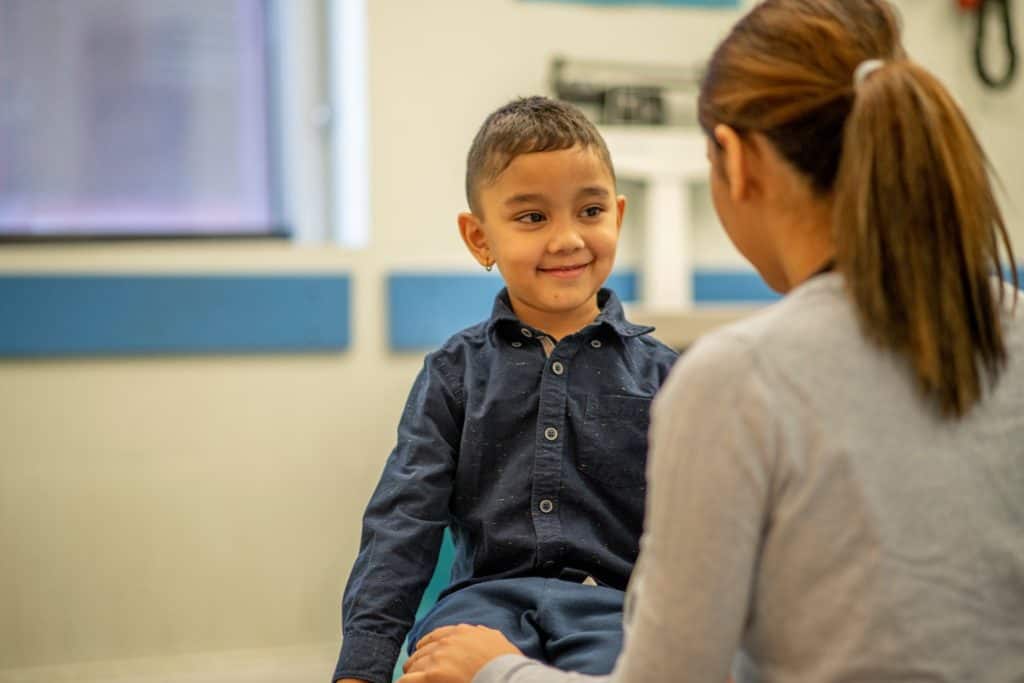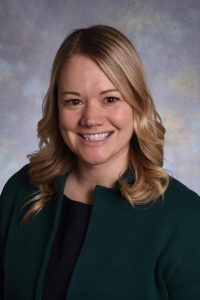Know the early signs of speech and language disorders in children

As the nation recognizes Better Hearing and Speech Month this May, pediatric-based speech-language pathologists at Hennepin Healthcare encourage families and colleagues to learn the signs of communication and feeding disorders. The Hennepin Healthcare Speech-Language Pathology Clinic is located in the Clinic & Specialty Center.
Eleven percent of children 3–6 years of age experience a voice, speech, language, or swallowing disorder. Yet, many families do not know the early signs to look for—a factor that can result in delayed care. Unaddressed, speech and language disorders can affect a child’s success academically and socially.
New data from the American Speech-Language-Hearing Association (ASHA) show that lack of awareness about the signs of communication disorders is the leading factor that prevents families from taking action on these disorders in young children.
It’s so important that healthcare providers, parents, and caregivers know the warning signs and are aware of the benefits of timely intervention. If families are worried about their child’s communication or feeding skills, speech-language pathologists can provide life-changing interventions that can help children develop and thrive. Early referrals to speech-language pathology services at Hennepin Healthcare or through the school district ensure children receive therapy when they are most capable of making improvements.
Common signs of speech and language disorders
Signs of a Speech Sound Disorder
- Says p, b, m, h, and w incorrectly in words (2–3 years)
- Says k, g, f, t, d, and n incorrectly in words (3–4 years)
- Produces speech that is unclear, even to familiar people (2–3 years)
Signs of a Language Disorder
- Does not smile or interact with others (birth and older)
- Does not babble (4–6 months)
- Makes only a few sounds or gestures, like reaching (7–9 months)
- Does not understand what others say (10 months – 2 years)
- Says only a few words (19 months – 2 years)
- Does not put words together to make sentences (24 months – 3 years)
- Speaks using words that are not easily understood by others (3–4 years)
- Has trouble with early reading skills, like pretending to read or finding the front of a book (4–5 years)
Signs of Stuttering (Disfluency)
- Repeats the first sounds of words—“b-b-b-ball” for “ball”
- Stretches sounds out—“ffffff-farm” for “farm”
- Shows frustration when trying to get words out
Signs of a Voice Disorder
- Loss of voice
- Uses a hoarse or breathy voice
- Speaks with strain and effort
Signs of a Feeding Disorder
- Not advancing to solid foods (9-12 months)
- Coughing or choking when eating or drinking (birth and older)
- Mealtimes are longer than 30 minutes or are a struggle (9 months and older)
- Slow weight gain/weight loss resulting in concern for adequate nutrition (birth and older)
For more information, families are advised to visit www.IdentifytheSigns.org. Families who would like to have their child evaluated can request a referral from their child’s primary care provider or ask for an assessment from Help Me Grow Minnesota.

 Allison Carolan, MS, CCC-SLP, works with patients who’ve suffered a traumatic brain injury, stroke, encephalopathy, anoxic brain injury, or various other neurogenic conditions. She is also involved in research with the HCMC Traumatic Brain Injury Center.
Allison Carolan, MS, CCC-SLP, works with patients who’ve suffered a traumatic brain injury, stroke, encephalopathy, anoxic brain injury, or various other neurogenic conditions. She is also involved in research with the HCMC Traumatic Brain Injury Center.
Andrea Ekstam, MA, CCC-SLP, practices in the acute and outpatient care setting providing diagnostic, treatment, and educational services, to pediatric patients in the areas of dysphagia, speech and language disorders, cognition, and augmentative/alternative communication.

